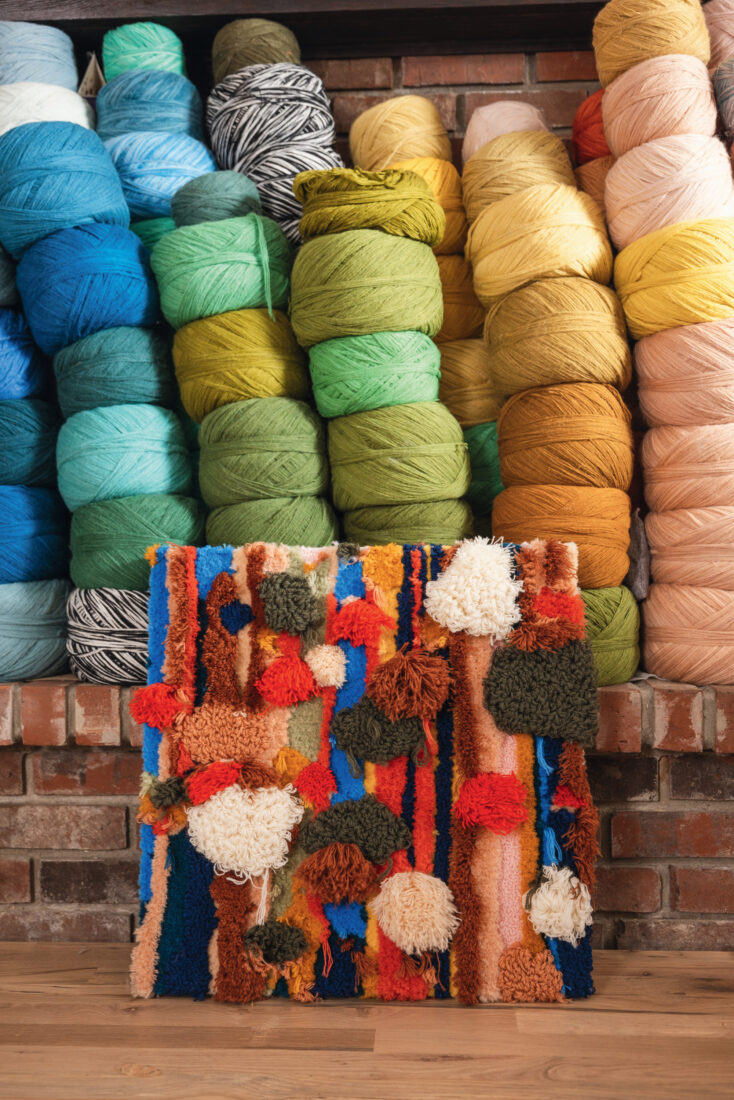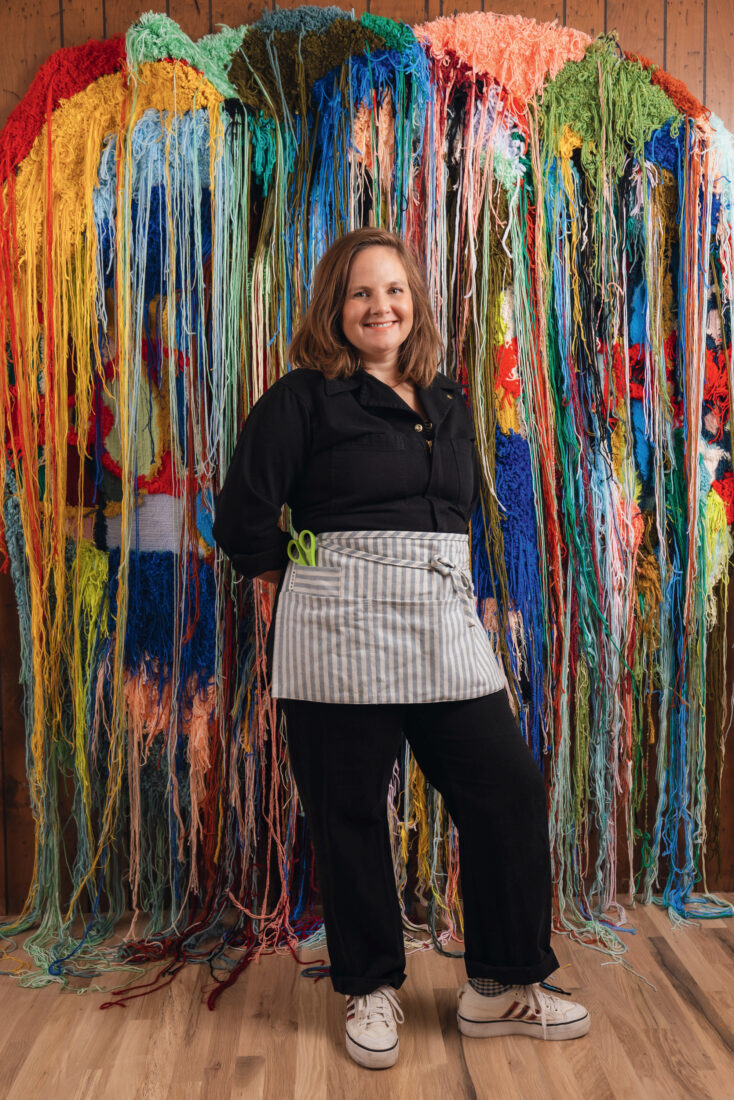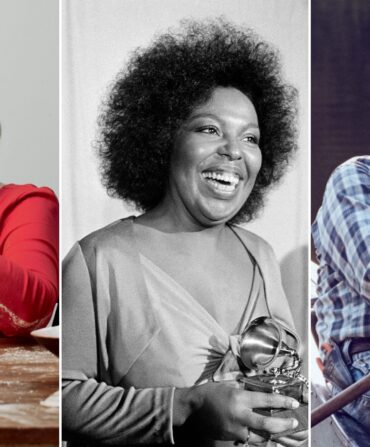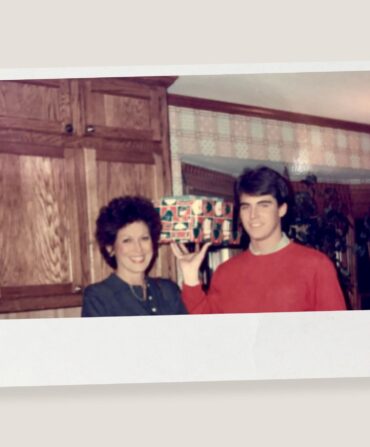When Trish Andersen wanders Savannah, she sees carpet. As she pushes her son’s stroller around her city’s shady squares or rides over the serpentine creeks and wetlands that lead out to Tybee Island, the fiber artist glimpses patterns in the live oak limbs and textures in the marsh grass. She then re-creates them in the large-scale, kaleidoscopic tapestries she tufts out of yarn in her home studio.“In lots of ways, my work is this kind of dripping, blended world,” she says, “and I can’t help but think that Savannah has inspired a lot of that.”

Though Andersen grew up across Georgia in Dalton, dubbed the Carpet Capital of the World for its role in inventing wall-to-wall carpeting, rugs were never part of her plan. In school, she had learned her hometown’s history: how the creation of the chenille bedspread there in the 1890s evolved into a multibillion-dollar carpeting industry; how still today, 75 percent of the world’s carpet and rugs originate in the area’s more than 150 plants. “All along, coming from this carpet town I’ve been like: I am not going to have anything to do with carpets,” Andersen says with a laugh. So she went to the Savannah College of Art and Design to study graphic design, furniture and interior design, and then fibers, before moving to New York City, where she started an event design company.
But something was missing. “I felt like I had more to say than just whatever I was designing for some client,” she says. It was only when a friend sent her a video of people crafting rugs in India with tufting guns—nailing colorful yarn onto a tufting cloth rather than weaving strands on a loom—that Andersen’s creative longing found a name. “I had never seen a tufting gun before. I only knew about carpet making on the large scale of a broadloom, but seeing it done like this sparked something in me. I started obsessively looking up videos and Googling more about it.”

This was around 2016, before tufting became more popular and local craft stores carried supplies. “I ordered like the biggest, most complicated tufting gun from China, not knowing at all what I was doing, and it showed up in parts in a box,” she says. She and her now husband, the artist Michael Porten, spent weeks trying to figure out how to make it work, wiring it for both her studio in Brooklyn and his in Savannah and flying it back and forth when she would visit. “The time I finally got the first stitch to work, I was in my studio in New York and I called Michael crying,” she recalls. “This was it. It felt like such a freedom. I could finally tap into that flow state that I had with art when I was younger.”
For each piece, she starts by sketching ideas, first on paper, then on a large tufting cloth, before picking out the right yarn for the project. “I get some yarn from India; I’ve had people from Dalton give me stuff from warehouses; I’ll buy specialty wool and I’ll also buy the cheapie acrylic stuff from Michaels,” she says. “I’m not a yarn snob at all. For me it’s about getting the right color and the texture.” She then begins “coloring in the backing material like a giant coloring book,” choosing the yarn and stitch that fit each section best. Loop pile, for instance, creates rings of yarn along the canvas; cut pile produces a more traditional shag, which she can pull soft and tight to the backing or leave dripping down in a waterfall of hues. “I’m playing with this push and pull of color, but also a push and pull of texture and depth,” she says.
Once the canvas is full, Andersen paints a layer of thick, smelly latex along the back of the piece to seal the fibers into place, a laborious step she used to dread—until she discovered its role in her own family’s history. Her grandfather had moved to Dalton from Chicago in 1949 to sell latex to the carpet industry, a fact she learned only after complaining to her father about the noxious process. “What’s been so cool is that once I started tufting, people really started opening up to me,” says Andersen, who now offers floor rugs herself, as well as other home goods and large-scale commissioned pieces. “I also found out that my aunt’s mother worked in a spread house making those chenille bedspreads. Here I was, saying I never want anything to do with carpet, when really, it’s brought me so much joy. It’s brought me closer to who I really am.”








